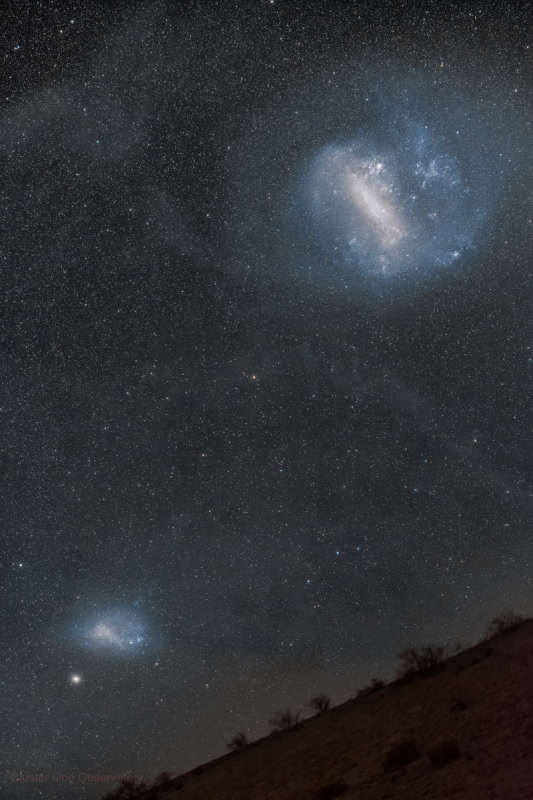
|
Credit & Copyright: Felipe Mac Auliffe Lö¨pez
Explanation:
The two prominent clouds in this Chilean Atacama Desert
skyscape captured on January 21
actually
lie beyond
our Milky Way galaxy.
Known as
the Large and
the Small
Magellanic Clouds they are
so named for the 16th century Portuguese explorer Ferdinand Magellan,
leader of the first circumnavigation of planet Earth.
Famous jewels of southern hemisphere
skies, they are the brightest
satellite galaxies of the Milky Way.
The larger cloud is some 160,000 light-years, and the smaller 210,000
light-years distant.
While both are irregular dwarf galaxies in their own right,
they exhibit central barred structures in the deep wide-angle view.
Wide and deep exposures also reveal faint dusty
galactic cirrus
nebulae and the imprints of gravitational tidal interactions
between the Large and Small Magellanic Clouds.
|
January February March April May June July August September October November December |
| ||||||||||||||||||||||||||||||||||||||||||||||||
NASA Web Site Statements, Warnings, and Disclaimers
NASA Official: Jay Norris. Specific rights apply.
A service of: LHEA at NASA / GSFC
& Michigan Tech. U.
Based on Astronomy Picture
Of the Day
Publications with keywords: magellanic clouds
Publications with words: magellanic clouds
See also:
